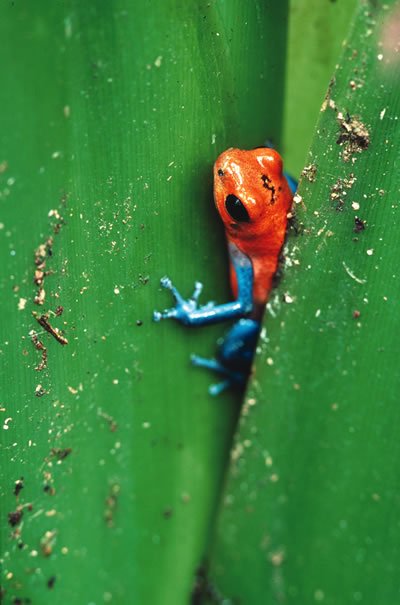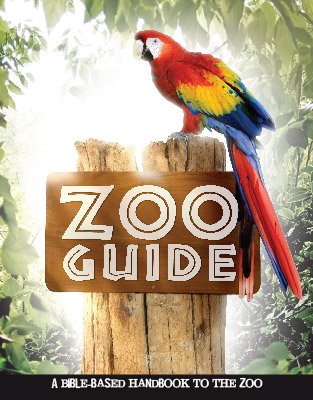Poison Dart Frog
Photo by Jelle de Gier on Unsplash
The different species vary in color and size. Most species are bright orange, yellow, green, or red.

Design
In each species of the poison dart frog, once the tadpoles hatch, the parents carry them on their backs and deposit them in a pool of water or in the middle of a water-filled Bromeliad plant, the leaves of which are cup-shaped. These leaves capture the water of the rainforest and provide the perfect habitat for these developing young. How did these frogs know to do this? Simple, God designed them with that knowledge.
Features
- The different species vary in color and size. Most species are bright orange, yellow, green, or red.
- Some species may also be non-toxic. These species are usually dull in color.
Fun Facts
- Generally speaking, the brighter the color, the more toxic the organism.
- These frogs get their name “poison dart” because Indians rub the tips of their darts on the frog’s back, which loads them with poison.
- In the wild, the frog’s diet is the source of its skin toxins. Specimens kept in captivity are completely non-toxic.
- Another name for this frog is “poison arrow frog.”
Created Kind Members
Rocket frog
CLASS: Amphibia (cold-blooded vertebrate)
ORDER: Anura (lack tails as adults)
FAMILY: Dendrobatidae (poison dart frogs)
GENUS/SPECIES: Well over 100 species
Size: Up to 2.4 in (6 cm)
Weight: Just ounces; varies within species
Original Diet: Plants
Present Diet: Insects
Habitat: Rainforests of Central and South America
Zoo Guide
Make your next visit to the zoo more than just fun—make it factual and fascinating too! You could even start a personal “creation zoo tours” ministry. Featuring more than 100 animals, our long-awaited Zoo Guide includes beautiful pictures and explores the amazing facts and design features that point to our awesome Creator. Excellent gift for any one who loves animals!
Browse Kids Book- © 2025 Answers in Genesis
- Privacy Policy
- Contact
- About

